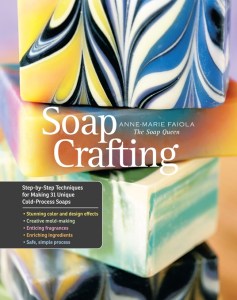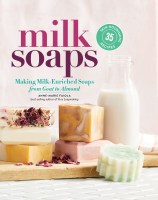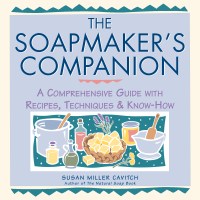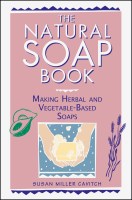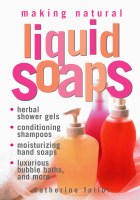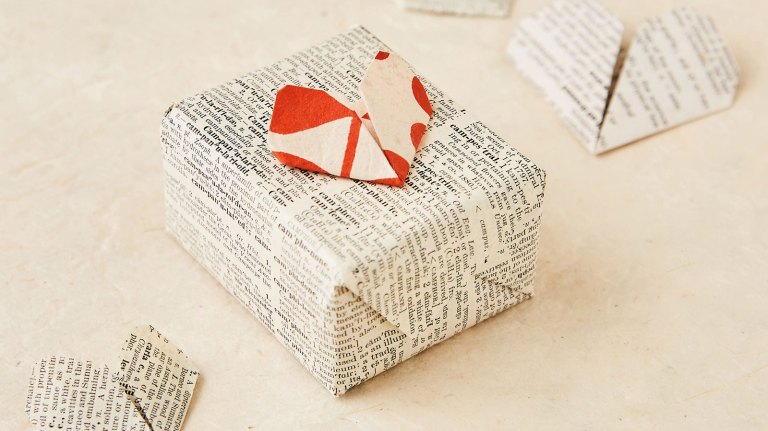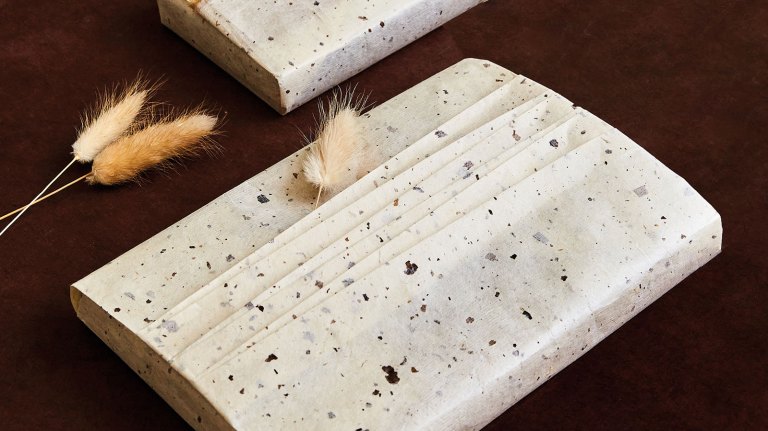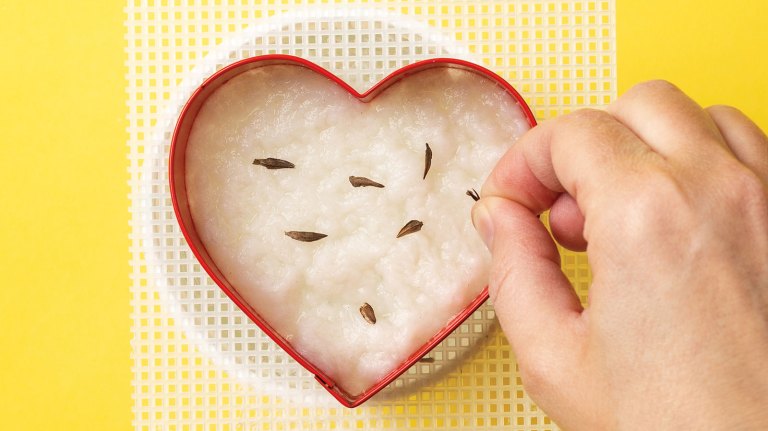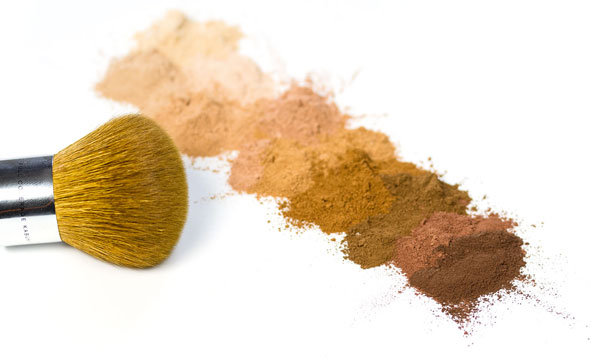Homemade Soap: Calendula Cleansing Bar
In this cold-process soap, calendula acts as a gentle cleanser and is great for those with sensitive skin, maturing skin, or young skin.
Calendula is one of those herbs whose flowers seem to contain their own source of light. If you’ve ever grown it in your garden, you’ve likely experienced yourself the deep, warm glow emanating from calendula’s fiery yellow-orange blooms. So it comes as no real surprise that, according to Rosemary Gladstar’s Medicinal Herbs: A Beginner’s Guide, “the flowers were thought to promote a sunny disposition and good health through the colder months.”
Beyond its brilliant warmth, this humble, hardy flower is a potent healer. It’s a go-to for skin treatments (such as creams, salves, and ointments) for its ability to repair damage and promote growth at the cellular level, as well as antiseptic and anti-inflammatory properties. And for all its strength, it’s a remarkably gentle, soothing herb, making it suitable for use even on babies’ sensitive skin.
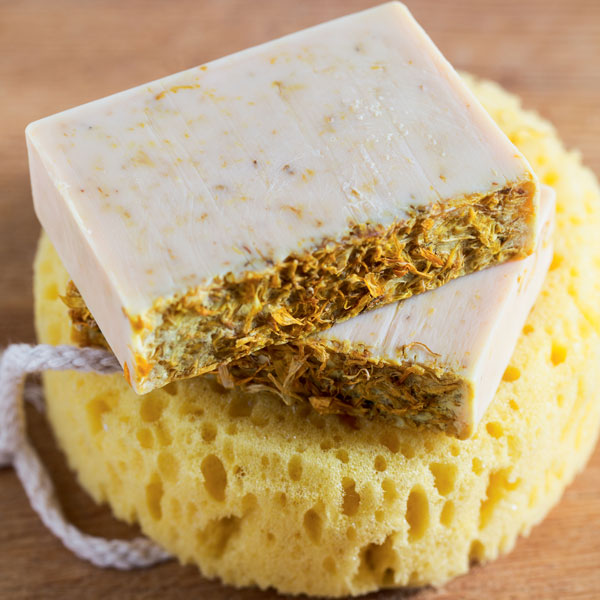
In her introduction to this soap recipe from Soap Crafting, “Soap Queen” Anne-Marie Faiola writes that “there are a couple of ways to incorporate the benefits of calendula into soap. Infusing the herb into oils called for in the recipe is one; another is adding the herb directly to the soap batter. In this recipe, both methods work together to create a bar with a small, nourishing lather and the soothing scent of lemongrass.”
If you’re looking for a way to show yourself or someone else a little love, a handcrafted bar of beautiful soap — especially if it’s made with flowers from your own garden — is truly special.
Before you begin:
Make sure you have standard soapmaking equipment on hand, as well as any recipe-specific equipment (see recipe below for additional supplies required for making Calendula Cleansing Bars).
Standard Soapmaking Tool Kit
- Cardboard or newspaper
- Heat-resistant bowls for measuring lye and water
- Heat-resistant measuring pitcher for oils (large enough to hold oils and lye-water, with room for mixing)
- Heat-resistant mixing utensils
- Measuring cups and spoons
- Rubber gloves
- Safety goggles
- Scale
- Skewers or chopsticks (for swirling)
- Soap molds (and liners or freezer paper)
- Stick blender
- Whisks
- 91% isopropyl rubbing alcohol in spray bottle
- Thermometer
- Sharp knife
A reminder about making soap safely:
Always:
- Work in a well-ventilated area. Do not breathe any fumes!
- Wear long sleeves, long pants, and closed-toe shoes.
- Don safety goggles (regular glasses are not sufficient protection) and rubber gloves during the entire soapmaking process.
- Keep children and pets away from your workspace.
Author Anne-Marie Faiola has an incredible library of soapmaking videos and articles on her website, brambleberry.com. Check out some of her tutorials — especially if you’re new to the craft!
Calendula Cleansing Bar
Makes approximately 12 bars
Ingredients
Lye-Water Amounts
- 5.2 ounces sodium hydroxide (lye)
- 13.4 ounces distilled water
Base Ingredient Amounts
- 10.0 ounces calendula-infused sweet almond oil (recipe follows)
- 30.0 ounces olive oil
Fragrance/Additives
- 2.3 ounces lemongrass essential oil
- 0.5–0.8 ounce dried calendula petals (about 1 cup by volume)
Equipment
- Standard equipment (see boxed item in article above)
- Double boiler
- Fine-mesh strainer
- Cheesecloth
- Silicone loaf mold
Directions
Make the calendula-infused sweet almond oil. In a double boiler, pour 10.5 ounces of sweet almond oil over 0.3 ounces of dried calendula petals (about ⅓ cup by volume). Turn heat on low and allow to sit for 1 to 4 hours. The longer the infusion sits on the heat, the stronger it becomes. Pour the infusion through a fine-mesh strainer lined with cheesecloth to remove as much of the debris as possible. Infusing slightly more oil than a recipe calls for ensures that the recipe amount is covered, as some oil will be absorbed by the flowers.
Make the soap mixture. Add the lye to the water (never the other way around), stir gently, and set aside until clear.
Combine the olive oil and 10 ounces of the calendula-infused sweet almond oil.
When the oils and the lye-water are both below 120°F, add the lye-water to the oils, pouring it over a spatula or the shaft of the stick blender to minimize air bubbles. Tap the stick blender a couple of times against the bottom of the bowl to release any air trapped in the blades. Do not turn on the stick blender until it is fully immersed. Stick-blend until light trace (the consistency of a melted milkshake) is achieved, 30 to 90 seconds. Note: Trace may take longer than usual due to the high olive-oil content.
Add the lemongrass essential oil. Continue blending with the stick blender until a medium trace (the consistency of cake batter) is achieved.
Reserve a couple of tablespoons from the cup of dried calendula petals to sprinkle over the top of the soap. Add the rest of the petals to the soap batter and stir in well with a whisk or spatula.
Pour into the mold. Pour the soap batter into the silicone loaf mold.
Sprinkle the remaining calendula on top of the soap for a rustic look. With a gloved hand, press the dried calendula gently into the soap so that it adheres.
Final steps: Cover the soap with plastic wrap or a cardboard lid. Insulate the entire mold by wrapping it in a large towel and set it aside for at least 24 hours at room temperature before unmolding. Unmold within 3 to 5 days.
Cut the soap into bars and allow to cure in a well-ventilated area for 4 to 6 weeks, turning the bars over every few days to ensure that they cure evenly.
Recipe excerpted from Soap Crafting © Anne-Marie Faiola.
Make your own custom-tailored and perfectly formed cold-process soaps! Learn how to use milk jugs and yogurt containers for molds, and how coffee, avocado, and even beer can add unique dimensions to your creations. This encouraging introduction to the art of soapmaking makes it simple to master the techniques you need to safely and easily produce your own enticingly fragrant soaps.
